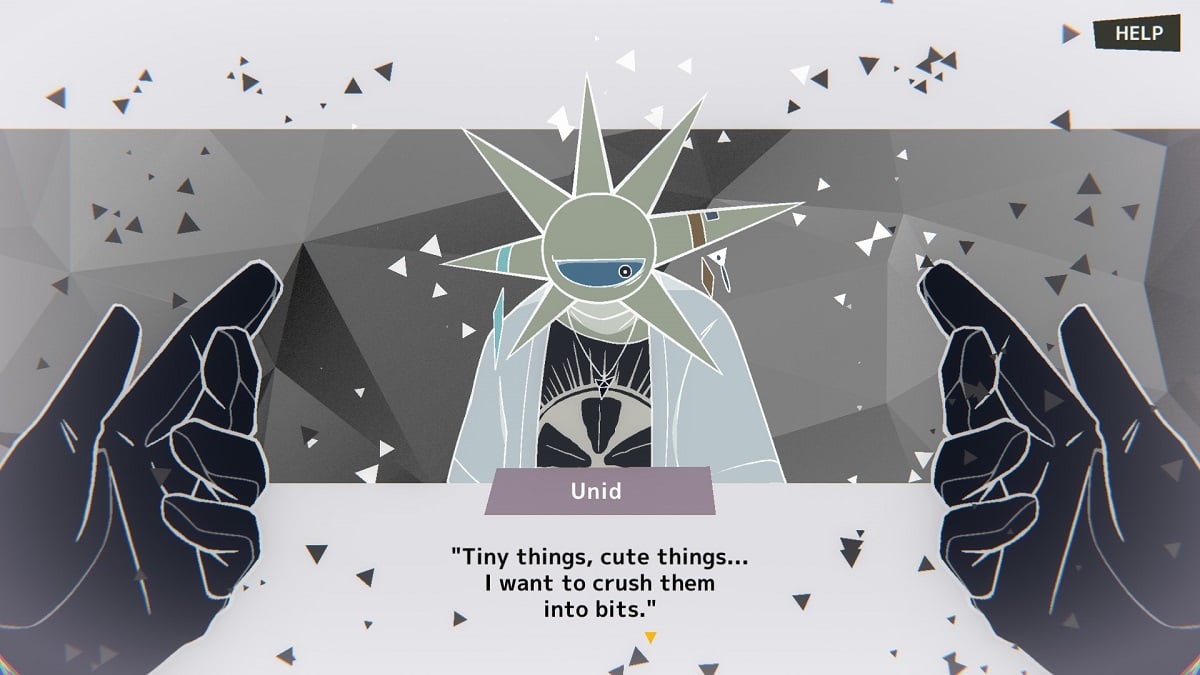Features
Talking ‘Ori and the Will of the Wisps’ with Composer Gareth Coker
Award-winning composer Gareth Coker sits down to talk Ori and the Will of the Wisps, musical inspirations, and orchestral composition.
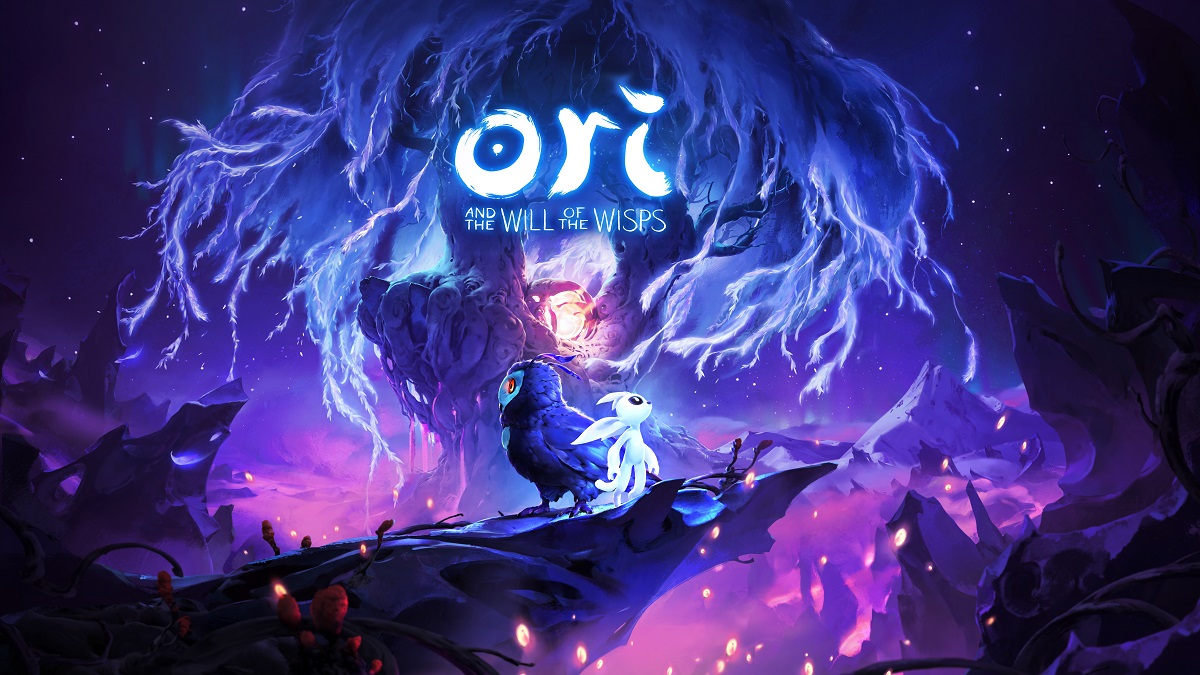
Behind the Music of Ori and the Will of the Wisps
It’s rare that every aspect of a game fires on all cylinders equally, but that’s exactly what Moon Studios has been able to accomplish with Ori and the Will of the Wisps. A follow-up to one of the most celebrated releases of 2015, Will of the Wisps has managed to improve upon its predecessor in every way–including, astonishingly, its score. Gareth Coker’s compositions have given Ori life since the early days of the franchise, and we were lucky enough to pick the award-winning composer’s brains just weeks after the title’s launch.
In this extensive interview, we go over everything from musical inspirations to the methodical art of matching a game’s soundtrack to what’s happening on-screen. We even get into the weeds about some of the score’s standout moments and how Coker went about creating one of his favorite themes. Individual tracks are linked throughout, but I recommend listening to the full soundtrack on streaming services beforehand for context (it’s also just a wonderful listen!).

GS: First of all, congratulations on shipping the game! This has obviously been a long time in the making, and the reception has been out of this world. Did you have concerns about being able to live up to the accolades that Ori and the Blind Forest received?
GC: Thank you! I hope the wait has been worth it! With regards to being concerned about living up to the pressure, I think that’s a thought that inevitably enters one’s head, but if you start making a game or a piece of art in the hopes of chasing more awards [then] you’re already setting down the wrong path. As a studio, every department examined itself and took into account any and all of the criticisms from the previous game–as well as what we did well–and really evaluated ways in which we could make the sequel better. Simply defining “What does better mean?” took quite some time, but eventually the studio settled on some core ideas that built on the original game, and the result is what you have today. In terms of music, I’m only ever looking at the connection between music and the game and how it makes the player feel; everything else is just noise.
GS: What inspired your general composition philosophy? Did any franchises you played growing up have a hand in shaping your take on game music today?
GC: Nothing in particular; my philosophy has been shaped by my taste which is something that constantly evolves while going through life. The version of myself in 2020 would write a very different score for Ori and the Blind Forest now than I did in 2014!
That said, there are a handful of franchises and composers whose work I would say I have always paid attention to. Originally it was the LucasArts in-house composer team of Peter McConnell, Clint Bajakian and Michael Land. Their tremendous work in developing the iMUSE music system really was pioneering at the time and while I was too young to understand it, I distinctly remember noticing it. Beyond the iMUSE system, the quality of the music shone through in all the other titles they worked on.
Another is the Deus Ex franchise, particularly the first game with the score by Alex Brandon. I’ve always felt the Deus Ex games did an amazing job with capturing vibe and feel, something that is of paramount importance when it comes to immersion in games. Jesper Kyd is the other composer who always seems to nail this no matter what project he is working on, particularly in his work on the Hitman and Assassin’s Creed franchises.
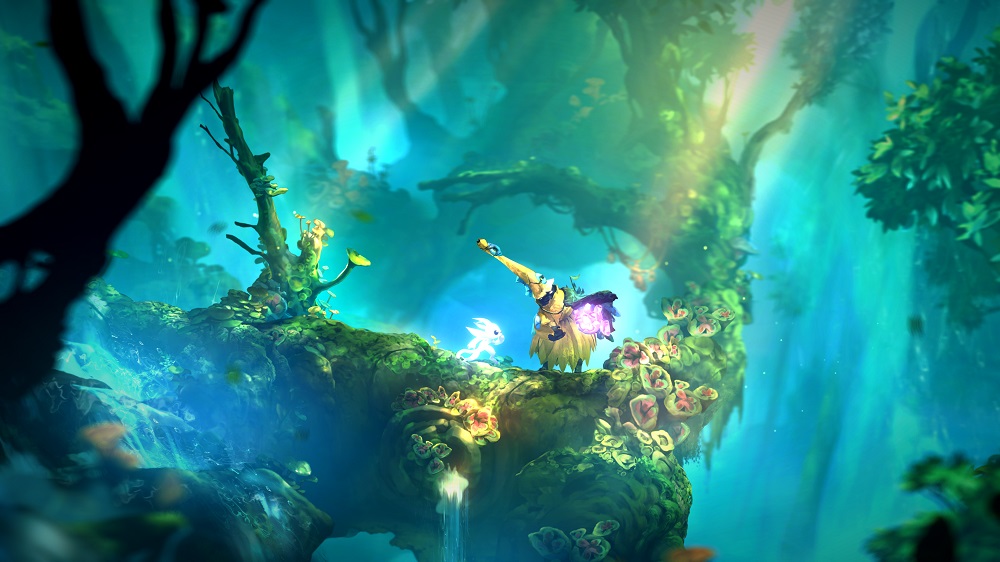
GS: As a sequel, how did the drastically larger scale of Will of the Wisps impact your process, if at all?
GC: It didn’t as much impact the process as much as it made me realize I had better be ready to take on an extremely large amount of work and make sure I had the infrastructure in place to be able to deliver something on such a large scale. In terms of the creative process, having more environments to work with and more character themes to develop in many ways made things easier. Especially with the increase in characters and the fact that they appear in different environments, it gave me a fair amount of flexibility in terms of what melodies to use where. I particularly enjoyed putting together Ash and Bone, which plays towards the end of Act One in the Silent Woodlands, as this combines Ori’s theme on piano, Ku’s theme in high strings, and Shriek’s theme in low strings.
What I had planned for but still hadn’t quite imagined was the sheer volume of work required to get this project recorded. 3+ hours of music is a lot of material to record, and we split the recordings over 2 dates: 4 days in December, 1 day in January. We recorded at AIR Studios in London–a phenomenal studio–with the Philharmonia Orchestra. Organizing logistics for my team (conductor, engineer, orchestrator, etc.) and making sure all the music was prepped on time was quite a challenge. The orchestration, the music preparation, the notation work, the taping of parts, the readying of Pro Tools session files, and so on. I think most people assume that the music just magically appears, but recording this soundtrack employed well over 100 people if you include all the support staff required. That said, it’s quite something to hear it all come together in the end, even if I was running on about 2 hours of sleep by the time we got there!
GS: The choice to blend vocals into a select few tracks in the OST results in some especially powerful moments (the crescendo in Ku’s First Flight is a personal favorite). What made you decide on this approach vs. going the strictly orchestral route?
GC: Voice has always been a key component of Ori’s soundtrack right from the opening notes of the first game. With our game being a language-less world (in the traditional sense), voice can be something that can be universally understood if sung with the right feel. Your reference of the flight scene is an example where to me, the voice is expressing joy. But to some, it could also represent relief or a yelp of breaking free; Ku’s wing has been broken her whole childhood, and only now is the moment she’s been able to get past that, and it’s the moment she’s been yearning for since she first started trying to fly. The vocals aren’t there so much to tell you how to feel, but more to help bring out whatever the player is feeling at that point. It’s my general approach for music–it can emotionally guide you, but a lot of the music exists in a place between happy and sad, and where that falls is going to be different from player to player.
There is also a heavy use of live choir on this game (we did not have the budget to record live choir the first time around!). The power of multiple human voices is something I really wanted to utilize this time around, especially given the darker overall tone. Particularly in Fading of the Light and the entire ‘endgame,’ you can really hear their value.
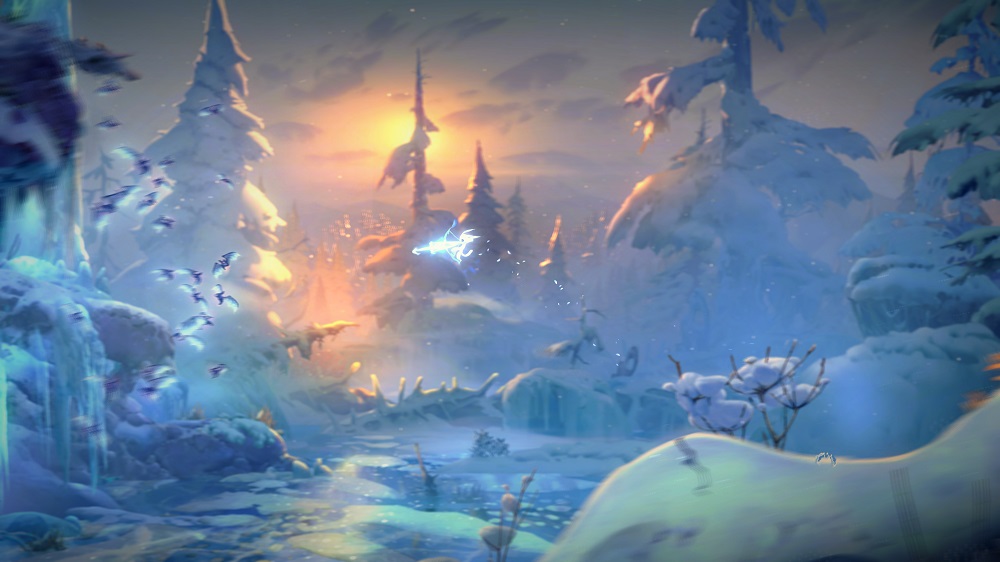
GS: The progression of Kwolok’s theme stands out as not only being one of the most enduring melodies in the game, but also one of the most reinvented. How do you go about altering themes to match different scenarios?
GC: I’m delighted you’ve asked about Kwolok’s theme as it was one of my favorite to write! It’s first heard in a fairly abstract form in The Eyes of Kwolok, and then is presented on bass clarinet in Kwolok’s Hollow / Dashing and Bashing. Then a grand version of the theme is presented in Meeting Kwolok, followed by a serene version of the theme for Kwolok’s Throne Room. Kwolok’s storyline takes him to the Luma Pools, where his arc closes out with Kwolok’s Malaise and Strength of the Forest.
I chose bass clarinet to represent Kwolok’s primary environment (Kwolok’s Hollow), as it is a reed instrument (reeds + swamps/marshes!), and also the range of the instrument is spectacular. It has weight and gravitas but also can sound sweet, particularly in its highest register. Putting it at the forefront of the mix when you first enter Kwolok’s environment immediately makes the player feel that this place is a bit different.
Upon meeting Kwolok, I take a more traditional approach and give it the full orchestra+choir treatment. I wanted the player to feel the same sense of awe that Ori would feel in that moment.
The throne room music is the same core melody originally written for bass clarinet but led by a humming male choir this time. The throne room is a place of calm and tranquility but represented another way to develop the theme.
Finally, Kwolok’s Malaise plays during the bossfight with a very different version of Kwolok. It still takes his theme but moves it to horns and strings and with a whole different set of instruments as this takes place outside his core environment.
Kwolok’s character arc takes you on a pretty full emotional journey and thus it allowed me to explore the full spectrum of what that theme could be turned into with all these different tracks.

GS: In past interviews you mentioned how important it was to get a feel for the “tempo” of a movement-focused game like Ori and the Blind Forest. Did Will of the Wisps’ heavy emphasis on combat also affect the way you approached composition?
GC: Combat still has a tempo too, so they approach largely stayed the same. Even with the emphasis on combat, Ori’s strengths lie in his freedom of movement. While there is an emphasis on new combat abilities this time around, you can still move pretty quickly when in combat. Finding that initial tempo of the game is always the same process for me; I’m just reacting to what I feel when I play the game.
GS: One of Will of the Wisps’ greatest strengths is how well the action on-screen meshes with the score and audio design as a whole. What are some of the tracks you feel benefit particularly well from being heard in the context of the game?
GC: Pretty much any of the major cutscenes, but one area I’d particularly like to highlight is the music that commences midway through Silent Woodlands: the tracks Reunification, Ash and Bone, Shriek, and Fading of the Light. This is one long sequence of gameplay that is very cinematic and while the tracks do stand alone, this is one part of the game where everything truly comes together–gameplay, visuals, narrative and audio.
For similar reasons I’d obviously recommend the ending sequence, really starting from The Spirit Willow which is a cutscene that precedes the final boss fight, right through to the end of the game. The Spirit Willow through to Ori, Embracing the Light is really one long continuous and connected piece of music when heard in-game. I did briefly consider stitching all those final tracks together for the soundtrack, but I figured people would want some reference points to jump in!
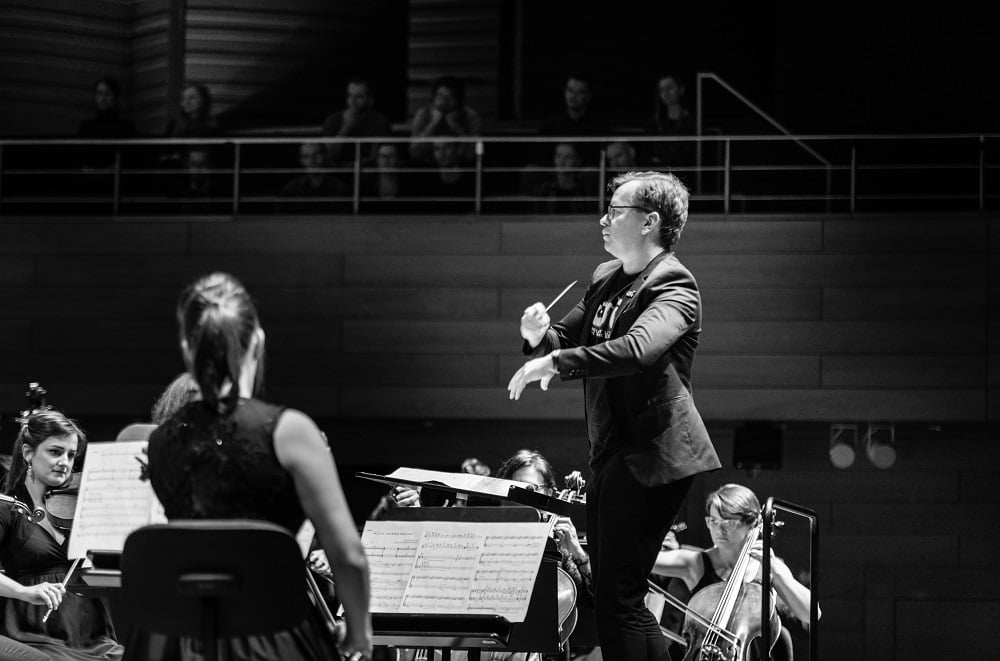
GS: Video games are many people’s first exposure to orchestral music today. Do you have any hopes that making scores like these will create future fans of the genre, or even inspire future composers?
GC: I think it’s inevitable. Especially if we are experiencing these things when we are young, we subconsciously carry them through to our later lives. My first memory of film music was Alan Silvestri’s Forrest Gump film and I can still recall every note of it to this day. The sheer number of people playing video games means that it’s inevitable that the music of some games will stick with them and some will be encouraged to go to the concert hall, and some will have a go at writing music with the goal of working in the industry. The games industry is still expanding, and the types of games being made is still growing. I suspect there will be several generations that will get inspired from the work currently being done.
Love the score and want to support Coker directly? You can purchase the 60-track OST on his Bandcamp page.

-

 Features4 weeks ago
Features4 weeks agoSocial Gaming Venues and the Gamification of Leisure – A New Era of Play
-

 Features4 weeks ago
Features4 weeks agoSolo Leveling Snubbed?! You Won’t Believe Who Won First at the 2025 Crunchyroll Anime Awards!
-

 Culture4 weeks ago
Culture4 weeks agoThe Global Language of Football: Building Community Beyond Borders
-

 Technology3 weeks ago
Technology3 weeks agoGamification and Productivity: What Games Can Teach SaaS Tools
-

 Features2 weeks ago
Features2 weeks agoThis Upcoming Romance Anime Might Just Break the Internet; Trailer Just Dropped!
-

 Features6 days ago
Features6 days agoDon’t Watch These 5 Fantasy Anime… Unless You Want to Be Obsessed
-

 Features3 weeks ago
Features3 weeks agoFarewell to a Beloved 13-Year-Old Isekai Anime That Brought Us Endless Laughter
-

 Features3 weeks ago
Features3 weeks agoWait, What?! Tom & Jerry Just Turned Into an Anime and It’s Glorious!
-

 Culture3 weeks ago
Culture3 weeks agoIs the Gaming Industry Killing Gaming Parties?
-

 Technology3 weeks ago
Technology3 weeks agoDigital Cash: For Gamers Who Don’t Ask Permission?
-

 Guides3 weeks ago
Guides3 weeks agoHow to Earn and Spend Diamonds in Mobile Legends
-

 Game Reviews3 weeks ago
Game Reviews3 weeks agoCall of Duty and the Myth of Military Realism: Tactical or Just Tacticool?












